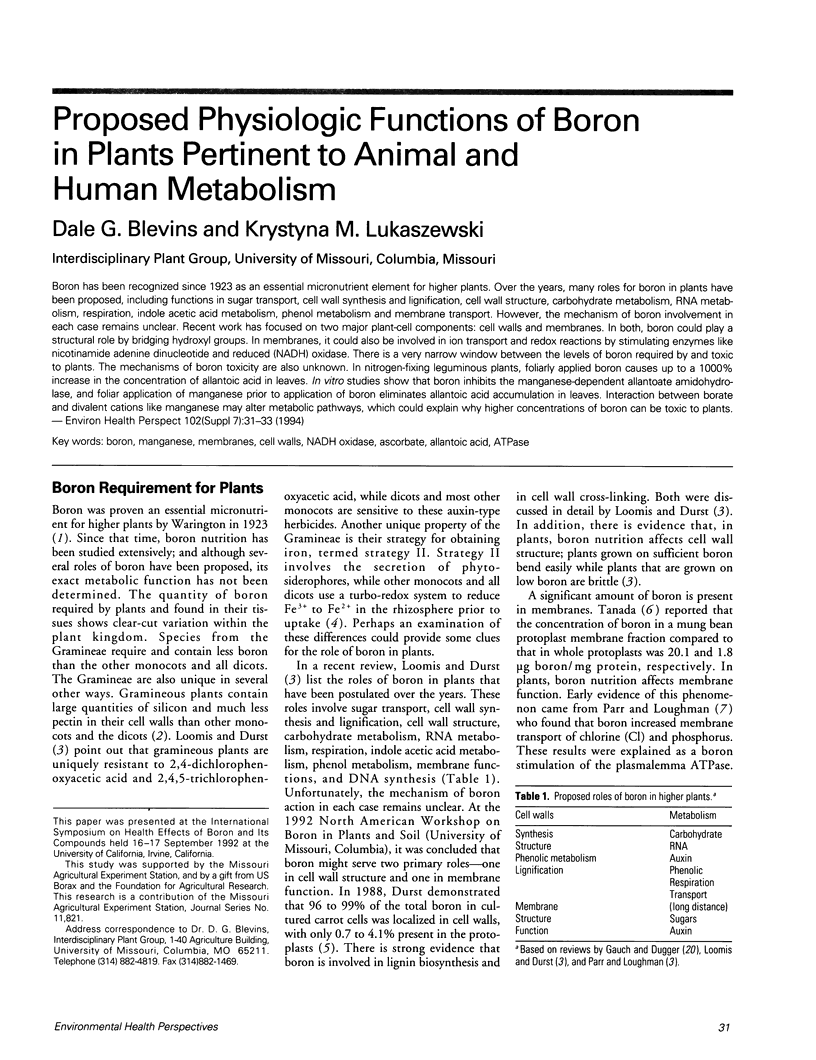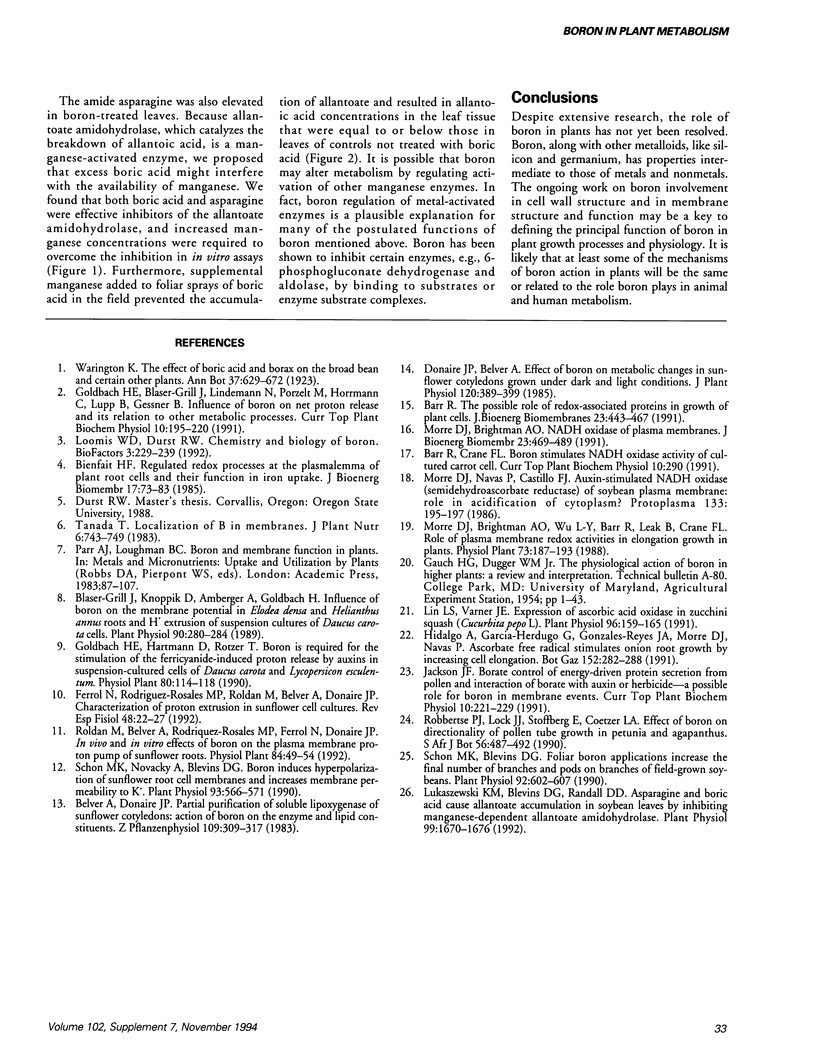Abstract
Boron has been recognized since 1923 as an essential micronutrient element for higher plants. Over the years, many roles for boron in plants have been proposed, including functions in sugar transport, cell wall synthesis and lignification, cell wall structure, carbohydrate metabolism, RNA metabolism, respiration, indole acetic acid metabolism, phenol metabolism and membrane transport. However, the mechanism of boron involvement in each case remains unclear. Recent work has focused on two major plant-cell components: cell walls and membranes. In both, boron could play a structural role by bridging hydroxyl groups. In membranes, it could also be involved in ion transport and redox reactions by stimulating enzymes like nicotinamide adenine dinucleotide and reduced (NADH) oxidase. There is a very narrow window between the levels of boron required by and toxic to plants. The mechanisms of boron toxicity are also unknown. In nitrogen-fixing leguminous plants, foliarly applied boron causes up to a 1000% increase in the concentration of allantoic acid in leaves. In vitro studies show that boron inhibits the manganese-dependent allantoate amidohydrolase, and foliar application of manganese prior to application of boron eliminates allantoic acid accumulation in leaves. Interaction between borate and divalent cations like manganese may alter metabolic pathways, which could explain why higher concentrations of boron can be toxic to plants.
Full text
PDF


Selected References
These references are in PubMed. This may not be the complete list of references from this article.
- Barr R. The possible role of redox-associated protons in growth of plant cells. J Bioenerg Biomembr. 1991 Jun;23(3):443–467. doi: 10.1007/BF00771014. [DOI] [PubMed] [Google Scholar]
- Bienfait H. F. Regulated redox processes at the plasmalemma of plant root cells and their function in iron uptake. J Bioenerg Biomembr. 1985 Apr;17(2):73–83. doi: 10.1007/BF00744199. [DOI] [PubMed] [Google Scholar]
- Blaser-Grill J., Knoppik D., Amberger A., Goldbach H. Influence of Boron on the Membrane Potential in Elodea densa and Helianthus annuus Roots and H Extrusion of Suspension Cultured Daucus carota Cells. Plant Physiol. 1989 May;90(1):280–284. doi: 10.1104/pp.90.1.280. [DOI] [PMC free article] [PubMed] [Google Scholar]
- Lin L. S., Varner J. E. Expression of Ascorbic Acid Oxidase in Zucchini Squash (Cucurbita pepo L.). Plant Physiol. 1991 May;96(1):159–165. doi: 10.1104/pp.96.1.159. [DOI] [PMC free article] [PubMed] [Google Scholar]
- Loomis W. D., Durst R. W. Chemistry and biology of boron. Biofactors. 1992 Apr;3(4):229–239. [PubMed] [Google Scholar]
- Lukaszewski K. M., Blevins D. G., Randall D. D. Asparagine and boric Acid cause allantoate accumulation in soybean leaves by inhibiting manganese-dependent allantoate amidohydrolase. Plant Physiol. 1992 Aug;99(4):1670–1676. doi: 10.1104/pp.99.4.1670. [DOI] [PMC free article] [PubMed] [Google Scholar]
- Morré D. J., Brightman A. O. NADH oxidase of plasma membranes. J Bioenerg Biomembr. 1991 Jun;23(3):469–489. doi: 10.1007/BF00771015. [DOI] [PubMed] [Google Scholar]
- Schon M. K., Blevins D. G. Foliar boron applications increase the final number of branches and pods on branches of field-grown soybeans. Plant Physiol. 1990 Mar;92(3):602–607. doi: 10.1104/pp.92.3.602. [DOI] [PMC free article] [PubMed] [Google Scholar]
- Schon M. K., Novacky A., Blevins D. G. Boron induces hyperpolarization of sunflower root cell membranes and increases membrane permeability to k. Plant Physiol. 1990 Jun;93(2):566–571. doi: 10.1104/pp.93.2.566. [DOI] [PMC free article] [PubMed] [Google Scholar]


